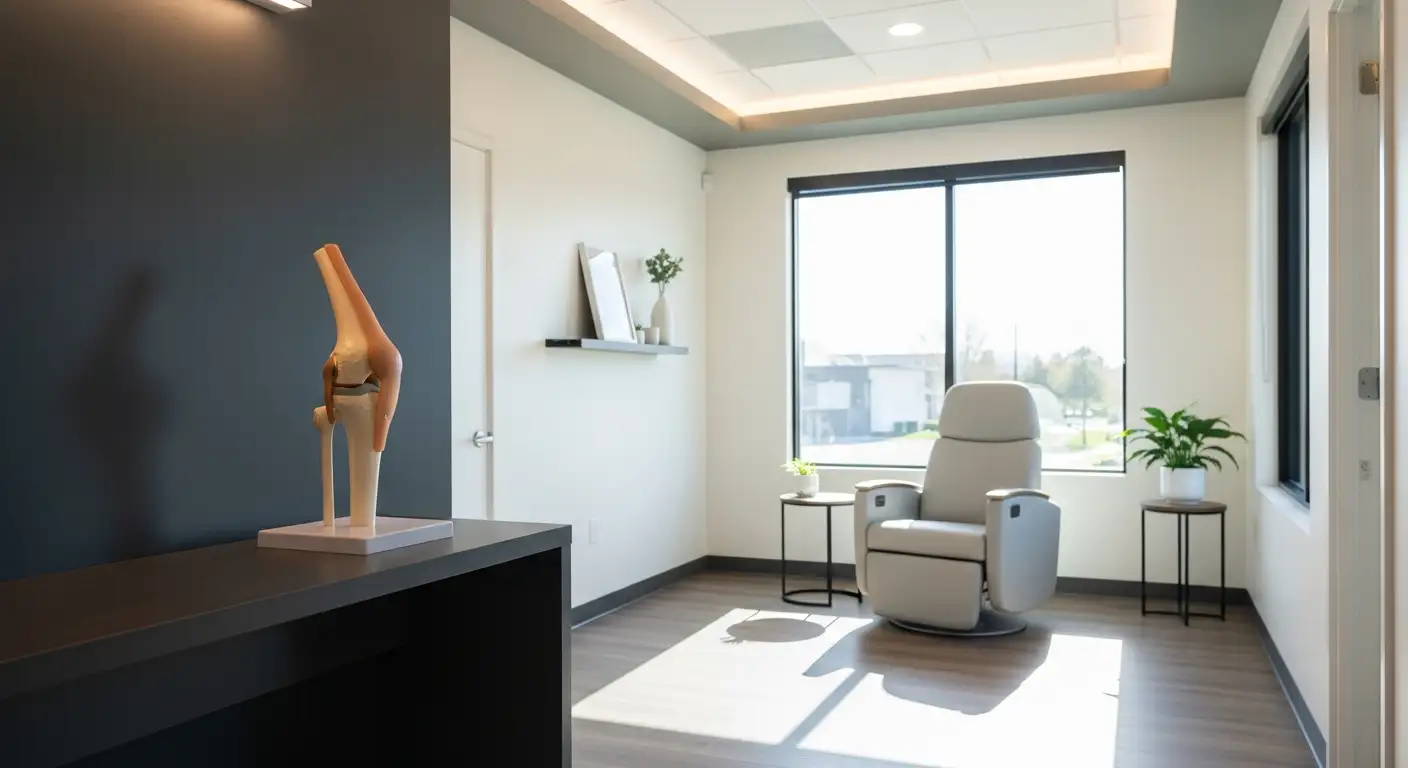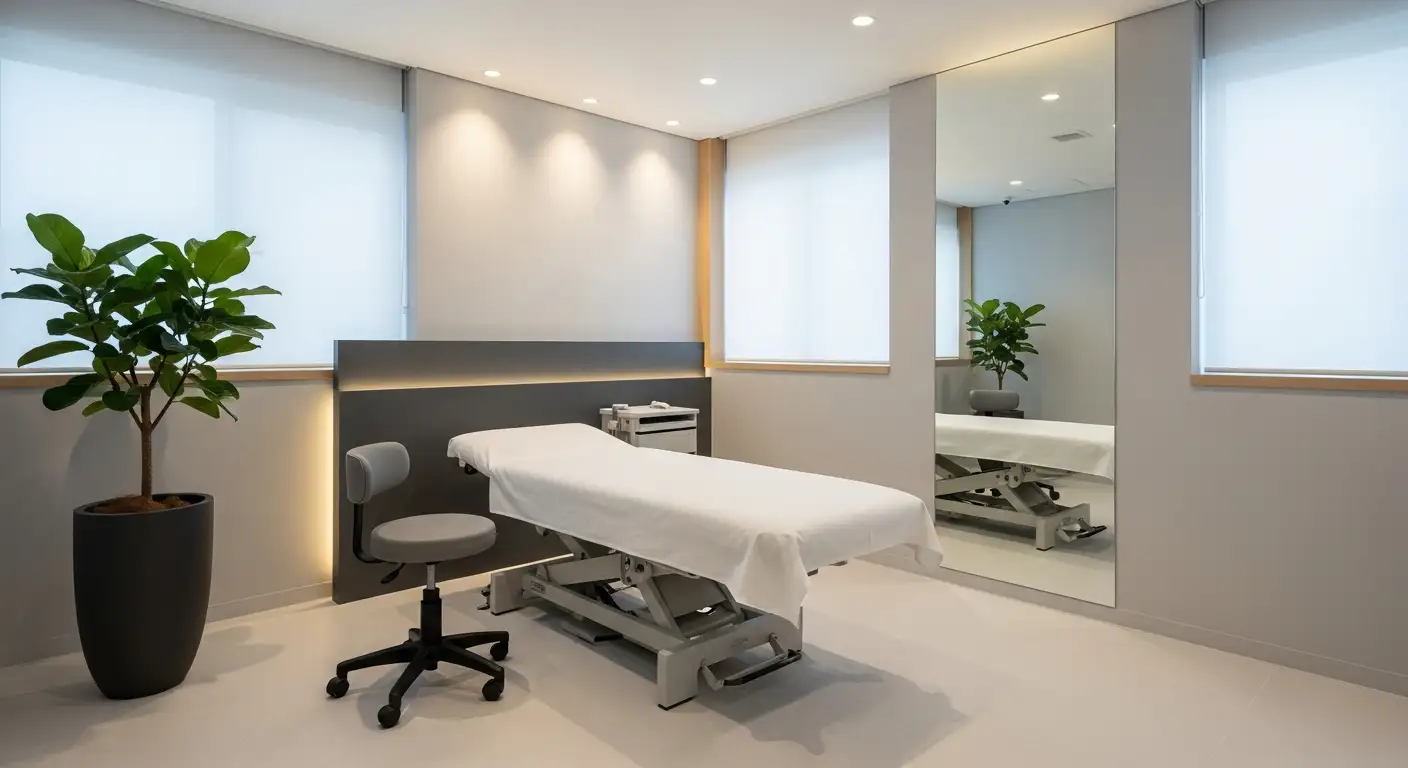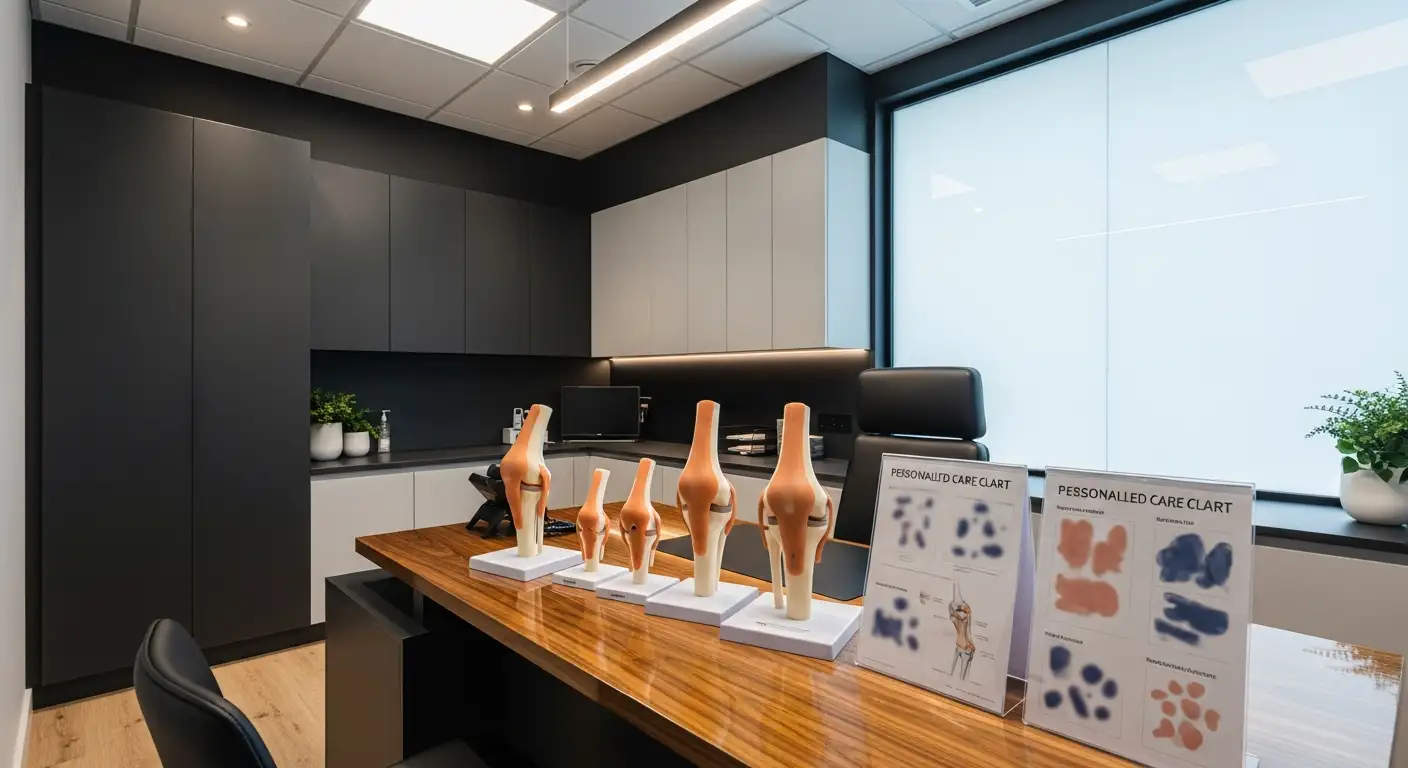Understanding Scar Tissue
In the realm of knee surgery recovery, the term 'scar tissue' often emerges as a primary concern. This section aims to shed light on what scar tissue is, how it forms, and the impact it can have on mobility.
Formation of Scar Tissue
Scar tissue formation after knee surgery is a natural part of the healing process. Scar tissue helps to connect and heal the injured tissue, thus stabilizing the knee joint. It typically develops within a few weeks of surgery but continues to evolve over the following months.

The process is triggered as a response to inflammation and tissue damage caused during knee replacement surgery. This procedure involves removing damaged cartilage and bone from the knee joint and installing an artificial joint. The body's healing response to this trauma leads to the production of scar tissue [2].
However, where there is healing, there can also be overcompensation. Excessive scar tissue can lead to complications and hinder the recovery process.
Impact of Scar Tissue on Mobility
While scar tissue serves a crucial role in the healing process, an excessive buildup of it can restrict mobility and cause pain. This occurs when the scar tissue makes the knee joint rigid, limiting movement and causing discomfort [1].
In more severe cases, scar tissue can interfere with normal knee movement and function, impeding the patient's ability to perform daily activities and participate in sports or exercise.
Arthrofibrosis is a condition characterized by the abnormal or excessive growth of scar tissue in the knee joint. This condition can be particularly challenging to treat without further surgical intervention.
Understanding the formation and impact of scar tissue is the first step towards managing it effectively. Whether through non-surgical interventions like physical therapy or surgical treatments, it's possible to reduce scar tissue after knee surgery and enhance mobility.
Arthrofibrosis: An Overview
Arthrofibrosis is a significant clinical challenge faced by a small percentage of patients who undergo total knee arthroplasty (TKA). Classified as abnormal scarring that obstructs normal range of motion, it affects approximately 3-10% of individuals post-TKA and significantly reduces their quality of life.
Causes and Symptoms of Arthrofibrosis
Arthrofibrosis has been described as a fibrosing pathology of the synovial membrane and the infrapatellar fat pad. It is caused by trauma and/or surgery, leading to inflammation and fibrosis within these areas, which in turn results in various arthrofibrotic lesions.
Scar tissue after knee surgery, a form of arthrofibrosis, can interfere with normal knee movement and function, causing pain and stiffness. This can potentially hinder the patient's ability to perform daily activities and participate in sports or exercise [1].
Dealing with Arthrofibrosis
To address the complications of arthrofibrosis, a combination of non-surgical and surgical interventions may be recommended based on the individual's condition and response to initial treatments.
Physical therapy is often the first line of treatment. It helps prevent excessive scar tissue formation and improve knee mobility. Physical therapy exercises can help stretch the knee joint and surrounding tissues, preventing stiffness and promoting healing.
In some cases, additional treatments such as corticosteroid injections or scar tissue massage may be necessary to address excessive scar tissue formation and improve knee function. In severe cases where scar tissue causes significant pain and limits mobility, a doctor may recommend additional treatments such as manipulation under anesthesia, or surgery to remove the scar tissue.
Overall, managing scar tissue after knee surgery involves a combination of therapies tailored to the individual's needs and response to treatment. The goal is to improve flexibility and range of motion in the knee joint and reduce pain and stiffness.
Non-Surgical Interventions
Non-surgical interventions play a crucial role in managing scar tissue after knee surgery. These methods primarily focus on improving knee mobility, reducing pain, and preventing further complications.
Role of Physical Therapy
Physical therapy is often recommended after knee surgery to help manage scar tissue formation and improve knee mobility. It promotes mobility and flexibility in the knee joint, crucial for a successful recovery.
Physical therapy exercises help stretch the knee joint and surrounding tissues, preventing stiffness and promoting healing. These exercises are designed to gradually increase the knee's range of motion, reducing the risk of scar tissue causing problems in the future [1].
Patients experiencing persistent pain, swelling, or limited mobility after knee surgery should consult their healthcare provider for further evaluation and appropriate management of scar tissue formation. This ensures optimal recovery and function of the knee joint.
Other Non-Invasive Techniques
Apart from physical therapy, several other non-invasive techniques can be used to break up scar tissue after knee replacement surgery. These include range of motion exercises, stretching, ice therapy, manual therapy, massage, and joint mobilization.
These techniques can help improve mobility and reduce pain associated with scar tissue.
While these non-invasive interventions can be highly effective in managing scar tissue, it's important to note that severe cases may require surgical intervention. This could include manipulation under anesthesia, arthroscopic surgery, or total knee revision surgery. Such methods are usually considered when non-invasive approaches have failed.
To conclude, non-surgical interventions can be very effective in managing scar tissue after knee surgery. It's important for patients to follow their healthcare provider's advice and adhere to their prescribed physical therapy or other non-invasive techniques for the best results.
Surgical Treatments
In certain scenarios, scar tissue after knee surgery can become so problematic that a surgical intervention is necessary. This is typically considered a last resort when non-invasive approaches have not successfully alleviated the issues. There are several types of surgical procedures that can effectively help in breaking up scar tissue and improving mobility.
Manipulation Under Anesthesia
Manipulation under anesthesia (MUA) is a procedure where the patient is put under anesthesia and the surgeon manually moves the knee in different directions to break up the scar tissue. This procedure can significantly improve knee mobility and reduce pain. However, it's crucial to note that MUA is generally recommended when physiotherapy and other non-invasive methods have not yielded satisfactory results.
Arthroscopic Surgery
Arthroscopic surgery is a minimally invasive procedure that can be effective in removing scar tissue. In this procedure, a small camera, known as an arthroscope, is inserted into the knee joint through a small incision. The surgeon can then visualize the inside of the knee and use small surgical instruments to remove the scar tissue. While arthroscopic surgery minimizes scarring, it cannot entirely eliminate it.
Total Knee Revision Surgery
In instances where scar tissue buildup in the joint after surgery is difficult to treat without further surgical intervention, total knee revision surgery may be considered. This is a more complex procedure where the existing artificial knee joint is replaced with a new one. This surgery is usually necessary when there is extensive scar tissue formation causing stiffness and limiting mobility significantly.
It's important to note that all surgical interventions come with potential risks and should only be considered after a thorough discussion with the healthcare provider. The type of surgical treatment recommended will depend on the individual's specific condition, the amount of scar tissue, and how they have responded to initial treatments. Post-surgical rehabilitation and physical therapy will also play a significant role in recovery and preventing the recurrence of excessive scar tissue.
Preventing Scar Tissue Formation
While the formation of scar tissue after knee surgery is a natural part of the healing process, excessive scar tissue can lead to complications such as limited mobility and discomfort. This makes it essential to take preoperative measures and follow a postoperative rehabilitation plan to minimize scar tissue formation.
Preoperative Measures
Before undergoing knee surgery, patients can take several steps to help reduce the formation of scar tissue. Maintaining a healthy lifestyle can boost the body's natural healing abilities and potentially lessen the amount of scar tissue produced. This includes:
- Eating a balanced diet rich in nutrients that promote healing, such as vitamins C and E, zinc, and protein.
- Regular exercise to maintain muscle strength and flexibility, which can aid rehabilitation post-surgery.
- Avoiding smoking and excessive alcohol consumption, as these can impair the body’s healing process.
Moreover, discussing with the surgeon about the risk of scar tissue formation and understanding the surgical procedure can help patients prepare for the recovery process and set realistic expectations.
Postoperative Rehabilitation
After undergoing knee surgery, a comprehensive rehabilitation plan is critical for preventing excessive scar tissue formation and promoting optimal recovery. This plan typically includes:
- Physical Therapy: Engaging in a regular physical therapy regimen is often recommended post-surgery. Physical therapists can guide patients through targeted exercises that help stretch the knee joint and surrounding tissues, preventing stiffness and promoting healing.
- Home Exercises: In addition to physical therapy sessions, patients are usually advised to perform specific exercises at home. These exercises focus on improving flexibility, strength, and range of motion in the knee joint.
- Massage Therapy: Massages can be beneficial for breaking down scar tissue. Trained therapists use specific techniques to soften and reduce scar tissue, thus improving tissue elasticity and joint mobility.
- Use of Assistive Devices: In the initial stages of recovery, assistive devices such as crutches or walkers may be recommended to reduce strain on the knee joint.
- Medication: Anti-inflammatory medications could be prescribed to manage inflammation and pain, which in turn can limit scar tissue buildup.
Regular follow-up with the healthcare provider and timely assessment of knee function is crucial for detecting any issues related to scar tissue buildup early. This enables timely intervention and reduces the risk of long-term complications associated with scar tissue after knee surgery.
Case Studies on Scar Tissue Management
An essential part of understanding how to address scar tissue after knee surgery is looking at real-life examples of how scar tissue management strategies have been effectively implemented. This section will explore successful interventions, both in physical therapy and surgical treatments.
Successful Physical Therapy Interventions
Physical therapy is a crucial component in managing scar tissue after knee surgery. It involves a variety of techniques such as range of motion exercises, stretching, ice therapy, manual therapy, massage, and joint mobilization. These methods aim to enhance knee mobility, reduce stiffness, and promote healing.
In one case, a patient experiencing decreased range of motion and discomfort in the knee joint after surgery engaged in a comprehensive physical therapy program. The program included specific exercises to stretch the knee joint and surrounding tissues. The patient reported notable improvement in flexibility and a reduction in pain after several weeks of consistent physical therapy, demonstrating how essential this non-invasive approach is in managing scar tissue after knee surgery [1].
Triumphs in Surgical Interventions
While non-invasive techniques are the first line of approach in managing scar tissue, surgical intervention may be necessary in more severe cases, often when non-invasive methods fail.
In one such instance, a patient with significant scar tissue build-up, causing pain and restricted knee motion, underwent manipulation under anesthesia. This procedure involves forcibly bending and stretching the knee while the patient is under anesthesia to break up the scar tissue. Post-procedure, the patient reported a significant improvement in knee mobility and a reduction in pain, highlighting the potential benefits of surgical interventions in managing scar tissue after knee surgery.
These case studies serve as examples of the various strategies available for managing scar tissue after knee surgery. The chosen approach often depends on the severity of the scar tissue build-up and the patient's individual response to initial treatments. It's crucial to remember that every situation is unique, and what works for one patient may not work for another. Therefore, it's essential to consult with a healthcare provider to discuss the best course of action for your specific needs.
References
[1]: https://www.webmd.com/pain-management/knee-pain/what-to-should-know-about-knee-scar-tissue
[2]: https://www.succeedcourses.com/blog/how-to-break-up-scar-tissue-after-knee-replacement-surgery
[3]: https://fixknee.com/arthrofibrosis-of-the-knee
[4]: https://www.ncbi.nlm.nih.gov/pmc/articles/PMC4639721/
[5]: https://docs.github.com/en/get-started/writing-on-github/working-with-advanced-formatting/creating-and-highlighting-code-blocks





